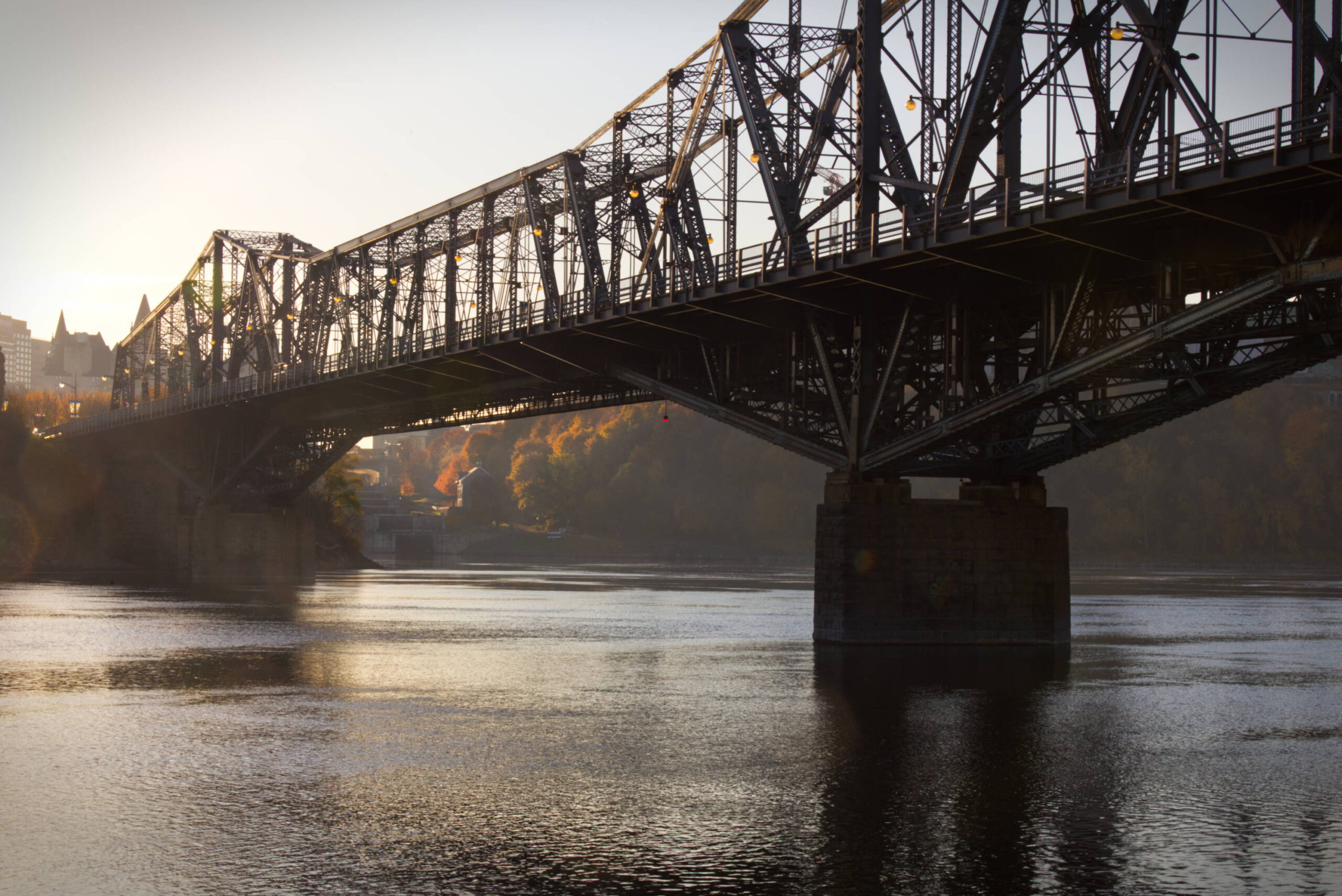On September 21, 2022, Senior Conservation Architect and Urbanist Mark Thompson Brandt of TRACE architectures (formerly MTBA Associates) was asked by Heritage Ottawa to present the environmental sustainability argument for rehabilitating the historic Alexandra Bridge, which can be viewed here (starting at 8:35). Since it was built in 1900, this iconic structure is a critical part of the cultural and natural landscape that defines Canada’s National Capital Region, as discussed in a previous Heritage Ottawa lecture.
Conservation and reuse of structures is climate action. When we reuse household items or clothing or cars, or even recycle cans, bottles, newspapers, we are saving carbon emissions. Why not the same for buildings and other infrastructure? Natural and Cultural Conservation have the same roots and the same approach: Preserve that which we value.
-Mark Thompson BrandtMark Thompson Brandt
Repair or replace: the differences are in the costs, and not just construction costs, but all the many other variables that should go into a decision on a massive item of infrastructure like this. The analysis to date appears to focus only on a few economic factors to the exclusion of environmental and social factors. Therefore, in our opinion, the current approach does not meet the requirements of the Federal Sustainable Development Act, Greening Government Strategy nor the UN Sustainable Development Goal #11 (Sustainable Cities and Communities). Furthermore, the government’s Life Cycle Cost Analysis raises several questions. For example, why would replacement be recommended when the three replacement options are either very basic concrete and steel which is totally inappropriate for the site OR signature bridges costing 50%-160% more than the rehabilitation option? And that is just project economic costs; it excludes the environmental and social costs!!
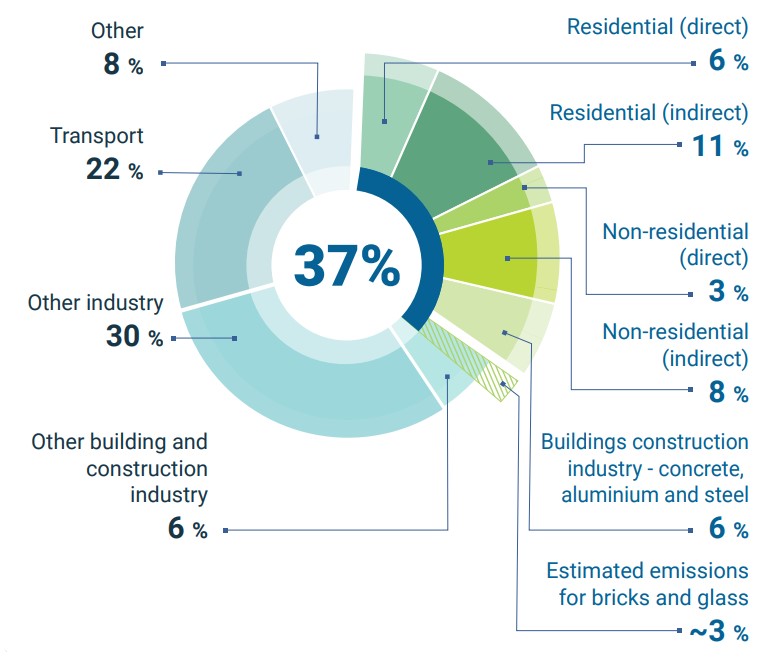
According to the Global Alliance for Buildings and Construction, buildings and infrastructure account for about 43% of the world’s greenhouse gas (GHG) emissions. The global warming potential for these emissions is expressed in kilograms of carbon dioxide equivalent (CO2e or “carbon”). With respect to the built environment, there are essentially two kinds of carbon:
- Operational carbon – all the greenhouse gases (GHGs) that the building generates to control temperature and power appliances, etc.
- Embodied carbon – GHGs that went into mining, manufacturing, transporting and building the construction materials to make the building, as well as the carbon to demolish it later in the lifecycle.
Sustainable building efforts have largely focused on operational carbon, meaning that embodied carbon is now accounting for a larger percentage of the total carbon generated by the built environment. It is increasingly important to address the embodied carbon, especially for existing structures with long term usefulness, to avoid repeating emissions that could be avoided. For something like bridge infrastructure, it is almost all embodied carbon as they usually have little or no “operations”.
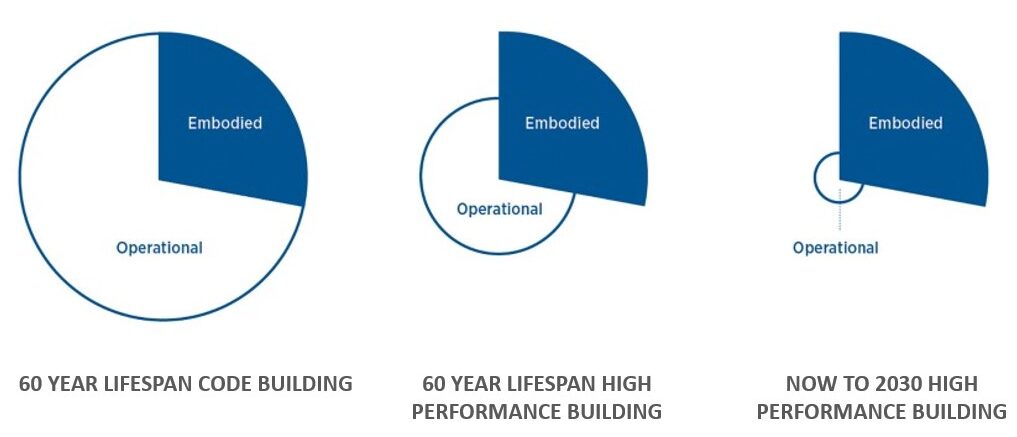
Existing buildings + infrastructure have already spent their embodied carbon – a valuable resource if it can be used to avoid more.
-Stacy H. Smedley, Executive Director, Building TransparencyStacy H. Smedley, Executive Director, Building Transparency
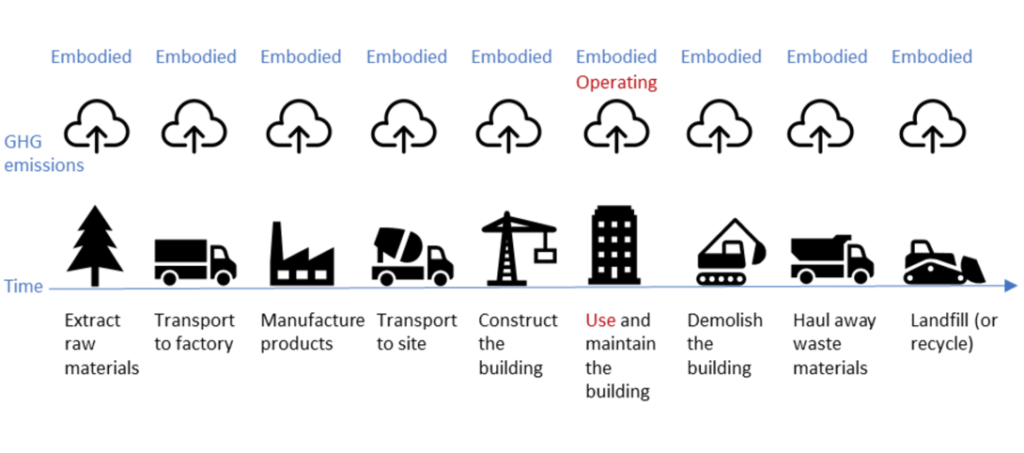
The 1875 wrought iron Blackfriars Bridge in London, Ontario and Scotland’s Forth Bridge, completed in 1890, are two excellent examples of complex rehabilitation projects that have used modern practices and technologies to enable a more efficient and durable approach. In addition to maintaining valuable transportation services, conserving these bridges strengthened the heritage and identity of their respective communities, while avoiding new additional carbon emissions, saving on total GHGs.
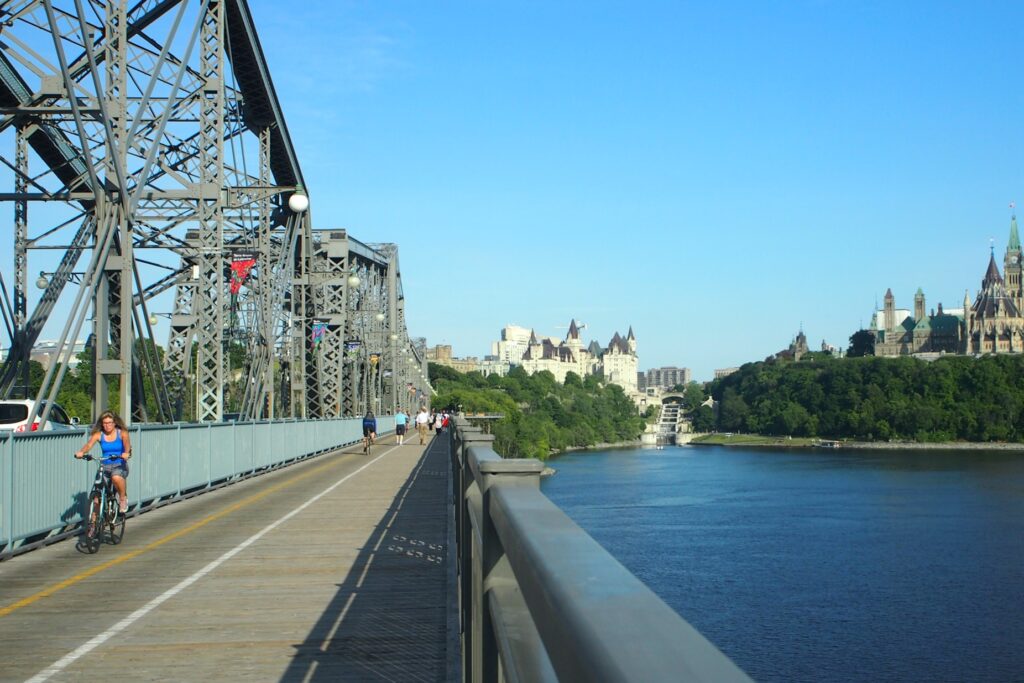
The National Capital Region can expect much change over the next 30 years, including population growth of over 26%, possible new Ottawa-Gatineau rail links, and the possible pedestrianization of Wellington Street for security and transit reasons. We need to think outside the box regarding how the Alexandra crossing could be used into the future, whether it is for car or public transit only. How much are Federal planners trying to break down the silos of the two cities and reposition transportation for the reality of one urban area across both sides of the Ottawa River?
Perhaps the most important question is what quantity of carbon emissions will be avoided if the bridge is rehabilitated instead of replaced? The precise calculation would require answers to the questions above to determine the exact structural capacity, among other variables, from which we can develop the scope of work and associated financial and carbon costs of rehabilitation and replacement options.
Although that is not within the scope of this investigation, we were able to calculate the embodied carbon of the existing Alexandra Bridge. Melissa Brady, an M.Arch student at TRACE architectures, went into the historical documentation to confirm the quantities of materials used for calculating the carbon footprint of approximately 10,500 tons of concrete and 3,800 tons of steel. We then looked at emissions factors associated with manufacturing processes for the bridge materials to give us an early estimate that was circulated for peer review among our colleagues in civil and environmental engineering.
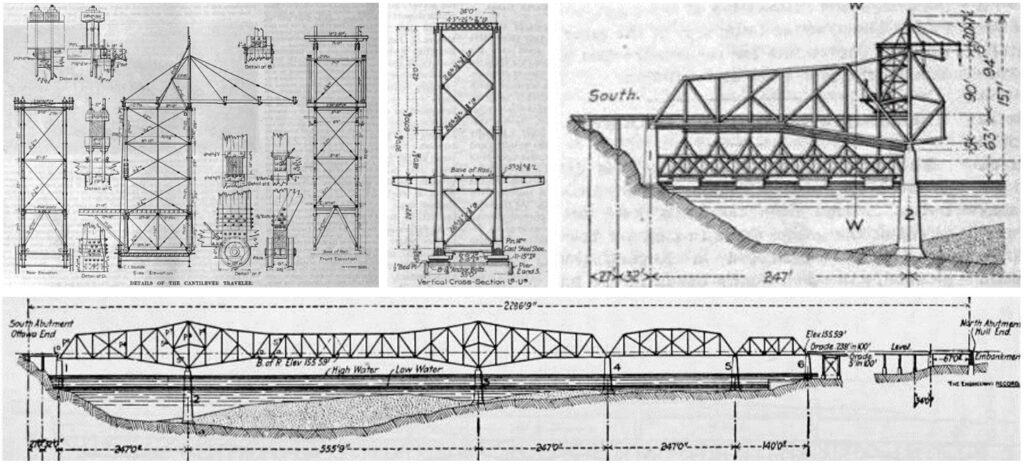
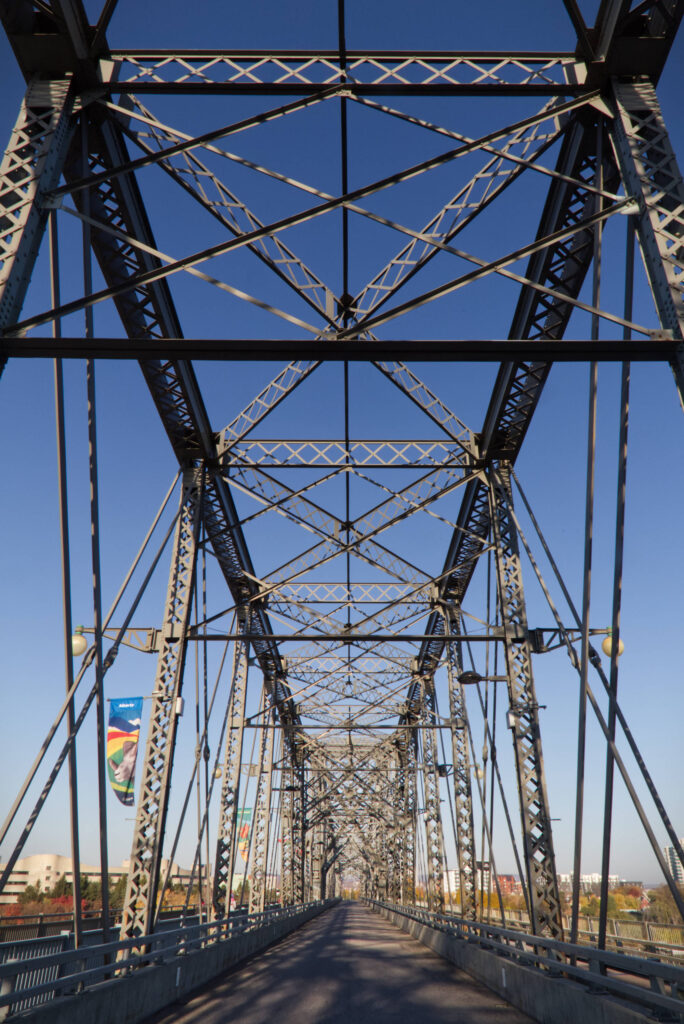
Our first peer reviewer, Eslam Elshorbagy, M.Sc. of University of Ottawa, ran the quantities through three different carbon calculators, using a range of the market-available materials that are currently used by professionals for this work.
- Athena Impact Estimator: 11,400 tons CO2e.
- EC3: 10,000 – 17,000 tons CO2e. [i]
- One Click LCA: 14,000 tons CO2e.
The next Peer Reviewer was Dr. Michael Gutland of Carleton University who looked at some overarching questions and cross-referenced with some related technical publications. Overall, our methodology was found to be sound and accurate for a preliminary order of magnitude estimate of embodied carbon emissions to originally construct the existing bridge.
Alexandra Bridge is estimated to have approximately 14,000 tons embodied carbon!
That’s a big number, but what does it mean? It means by demolishing the reusable bridge and building a new bridge, you are not taking advantage of avoiding the additional new carbon that goes into the replacement bridge structure. Therefore, rehabilitating the historic bridge would have the equivalent impact in lowering Global Warming Potential as:
- Taking over 2,500 gas-fueled cars and light trucks permanently off the roads; or,
- Adding almost 1,300 hectares (3200 acres) of forest to absorb that carbon; or,
- Eliminating the burning of about 6 million litres (1.6 million U.S. gallons) of gasoline!
Finally, in his M.A.Sc. thesis, Eslam Elshorbagy modelled the installation of over 21,000 photovoltaic panels on 31 University of Ottawa campus buildings with expected CO2 savings of approximately 14,000 tons CO2 over the 25-year life cycle of the project. That project would be globally, one of the most significant proposed solar panel projects on an academic campus. This means that rehabilitating the Alexandra Bridge, instead of building a new one, environmentally speaking, would be equivalent to the expected mitigation of one of the world’s largest campus solar panel projects!
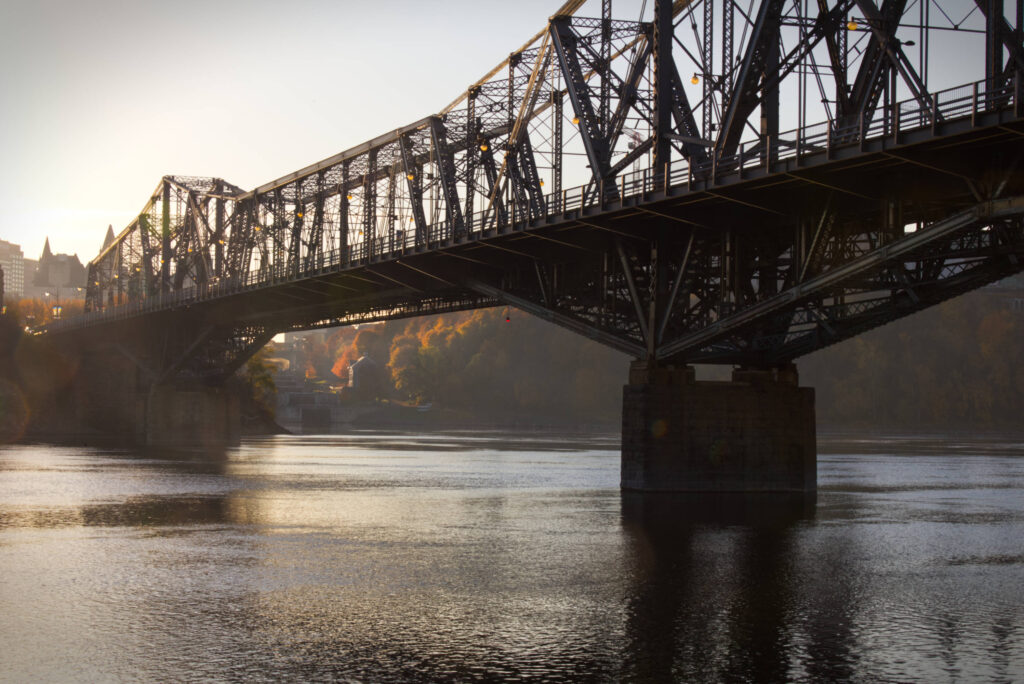
At the end of the day, WE NEED TO DO BETTER. We have all the tools we need to understand and calculate embodied carbon. We just need the will to embrace rehabilitation over new construction whenever appropriate– buildings, landscapes, infrastructure. We have the technologies and expertise to rehabilitate the Alexandra Bridge, an irreplaceable element of Canada’s most important Cultural Heritage Landscape. And we know how to calculate the REAL COSTS of rehabilitation vs replacement.
So, 14,000 tons of carbon emissions – save it or spend it? You be the judge.
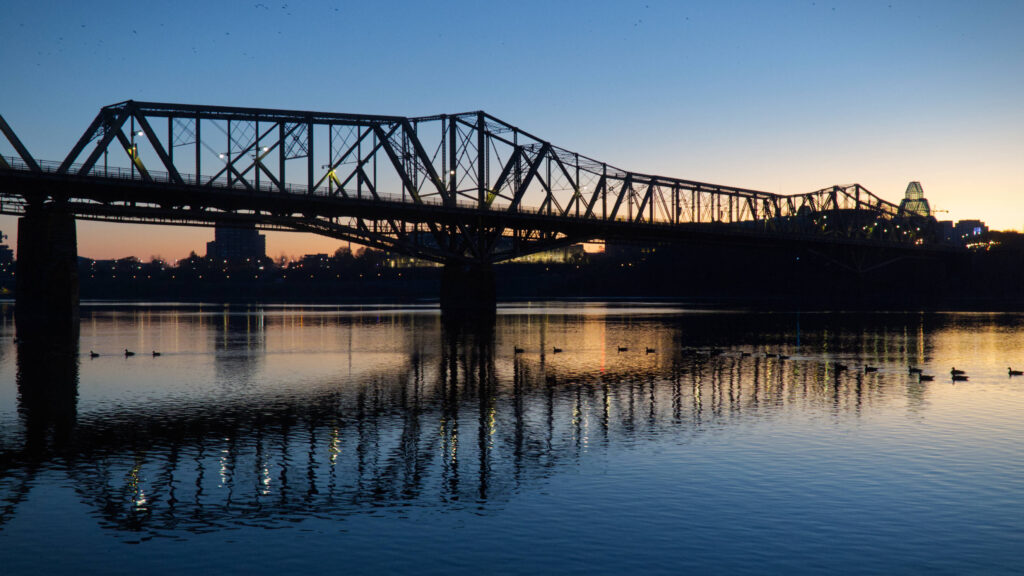
Notes
[i] EC3 provides a range due to the newer low-carbon technologies for concrete and steel manufacturing, so building a similar bridge with these technologies would amount to the lower end of the range. This is not significantly different from trying to calculate the precise nature of the concrete and steel used in the 1899-1900 for the original bridge.
References and Further Reading
Association of Consulting Engineering Companies Canada. “Rehabiliation of Historic Blackfriars Bridge”. 2020. https://www.acec.ca/awards/2020/a8.html
Brandt, Mark Thompson. “Historic Alexandra Bridge: Sustainability, Climate Action and Greening Infrastructure”. September 21, 2022. Heritage Ottawa Lecture Series: https://www.youtube.com/watch?v=ixHHV5hBho8
David Collings Dr, Technical Director (2022) The Carbon Footprint of Bridges, Structural Engineering International, 32:4, 501-506, DOI: 10.1080/10168664.2021.1917326
Elshorbagy, Eslam. “Exploring the Intersection of Science and Policy: The Case Study of Installing Solar Panels and Energy Storage System at the University of Ottawa”. M.A.Sc. Thesis. September 14, 2022. http://dx.doi.org/10.20381/ruor-28268
Jeanes, David, and John Zvonar. “Alexandra Bridge: Its Construction, Its Significance, Its Future”. September 30, 2021. Heritage Ottawa Lecture Series: https://www.youtube.com/watch?v=avYe0yWQYBg&t=75s
Public Services and Procurement Canada. “Life cycle cost analysis and replacement study for the Alexandra Bridge”. 2017. https://www.tpsgc-pwgsc.gc.ca/biens-property/cbncrsummary-pprcnsommaire-eng.html
The Forth Bridges. “Forth Bridge Restoration”. https://www.theforthbridges.org/about-the-forth-bridges/forth-bridge/forth-bridge-history/forth-bridge-restoration/
Treasury Board of Canada Secretariat. “Greening Government Strategy: A Government of Canada Directive”. Modified March 29, 2022. https://www.canada.ca/en/treasury-board-secretariat/services/innovation/greening-government/strategy.html
United Nations Department of Economic and Social Affairs. “Sustainable Development Goal 11: Make cities and human settlements inclusive, safe, resilient and sustainable”. 2022. https://sdgs.un.org/goals/goal11
United Nations Environmental Programme: Global Alliance for Buildings and Construction. “2022 Global Status Report”. 2022. https://globalabc.org/our-work/tracking-progress-global-status-report

